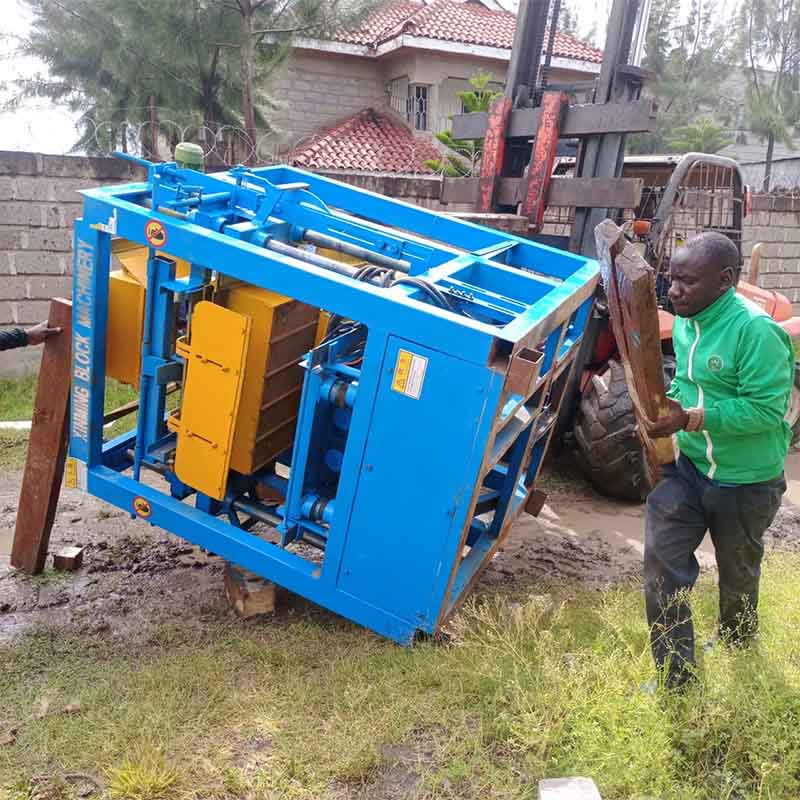
Image source: Aiwei Block Machines
Introduction
Brick making has been an integral part of the construction industry for centuries, providing the building blocks for countless structures worldwide. In recent years, the advent of innovative technology has revolutionized this age-old process, leading to the development of highly efficient and advanced brick making machines. These machines not only streamline production but also enhance the overall quality, durability, and sustainability of bricks used in construction projects. In this article, we will explore the fascinating world of brick making machines, delving into their features, benefits, and their significant impact on the construction industry.
1.Evolution of Brick Making
To appreciate the significance of brick making machines, it’s crucial to understand the evolution of brick making itself. The earliest bricks were hand-formed, requiring substantial labor and time. As civilizations progressed, manual techniques gave way to mechanized methods, such as the invention of the brick press. However, it was with the introduction of modern brick making machines that the industry experienced a transformative shift. These machines brought efficiency, precision, and scalability to brick production, allowing for greater construction possibilities.
2.Understanding Brick Making Machines
A brick making machine is a sophisticated piece of equipment designed to automate the brick production process. These machines are typically powered by electricity or hydraulics and consist of various components, including a mixer, feeder, conveyor belt, mold, and hydraulic press. The process begins with the mixing of raw materials such as clay, sand, cement, and water to create a homogenous mixture. This mixture is then poured into the machine’s feeder, which transports it to the mold. The hydraulic press applies pressure to the mixture within the mold, shaping it into bricks. The bricks are then released and conveyed for curing and drying.
3. Features and Advantages of Brick Making Machines
Modern brick making machines boast an array of features that significantly enhance the brick production process. These features include:
Automation and Efficiency: Brick making machines automate various stages of the production process, reducing human error and increasing production rates. They can produce a large number of bricks in a relatively short time, optimizing construction timelines.
Versatility: Brick making machines offer versatility in brick design, allowing for the production of different sizes, shapes, and patterns. This versatility provides architects and builders with creative freedom and expands the range of design possibilities.
Consistency and Quality Control: These machines ensure consistent quality by precisely controlling the mixture proportions, pressure applied during molding, and curing conditions. This results in uniformly shaped, dimensionally accurate, and durable bricks.
Cost Savings: Brick making machines can lead to substantial cost savings over time. Their efficiency reduces labor requirements, lowers waste generation, and optimizes resource utilization. Additionally, the durability and quality of bricks produced contribute to long-term savings by minimizing maintenance and repair costs.
Environmental Sustainability: Brick making machines align with sustainable construction practices. They optimize raw material usage, minimize energy consumption, and reduce greenhouse gas emissions. Moreover, by utilizing locally available materials, these machines reduce the need for transportation, further lowering the carbon footprint associated with brick production.
4.Applications and Impact
The applications of brick making machines are extensive, spanning residential, commercial, and infrastructure projects. These machines cater to the construction needs of various sectors, including housing, schools, hospitals, industrial facilities, and more. The impact of brick making machines on the construction industry is profound. They have revolutionized the way bricks are produced, offering a faster, more efficient, and sustainable alternative to traditional methods. Their contributions extend beyond production efficiency, impacting project timelines, quality standards, and overall construction practices.
Conclusion
Brick making machines have undoubtedly transformed the construction industry, offering numerous benefits ranging from increased efficiency to enhanced quality and sustainability. As technology continues to advance, these machines will evolve further, incorporating innovative features and improved performance. The continued adoption of brick making machines will contribute to more efficient and sustainable construction practices, driving the industry towards a future of streamlined processes, reduced environmental impact, and extraordinary possibilities in architectural design.
